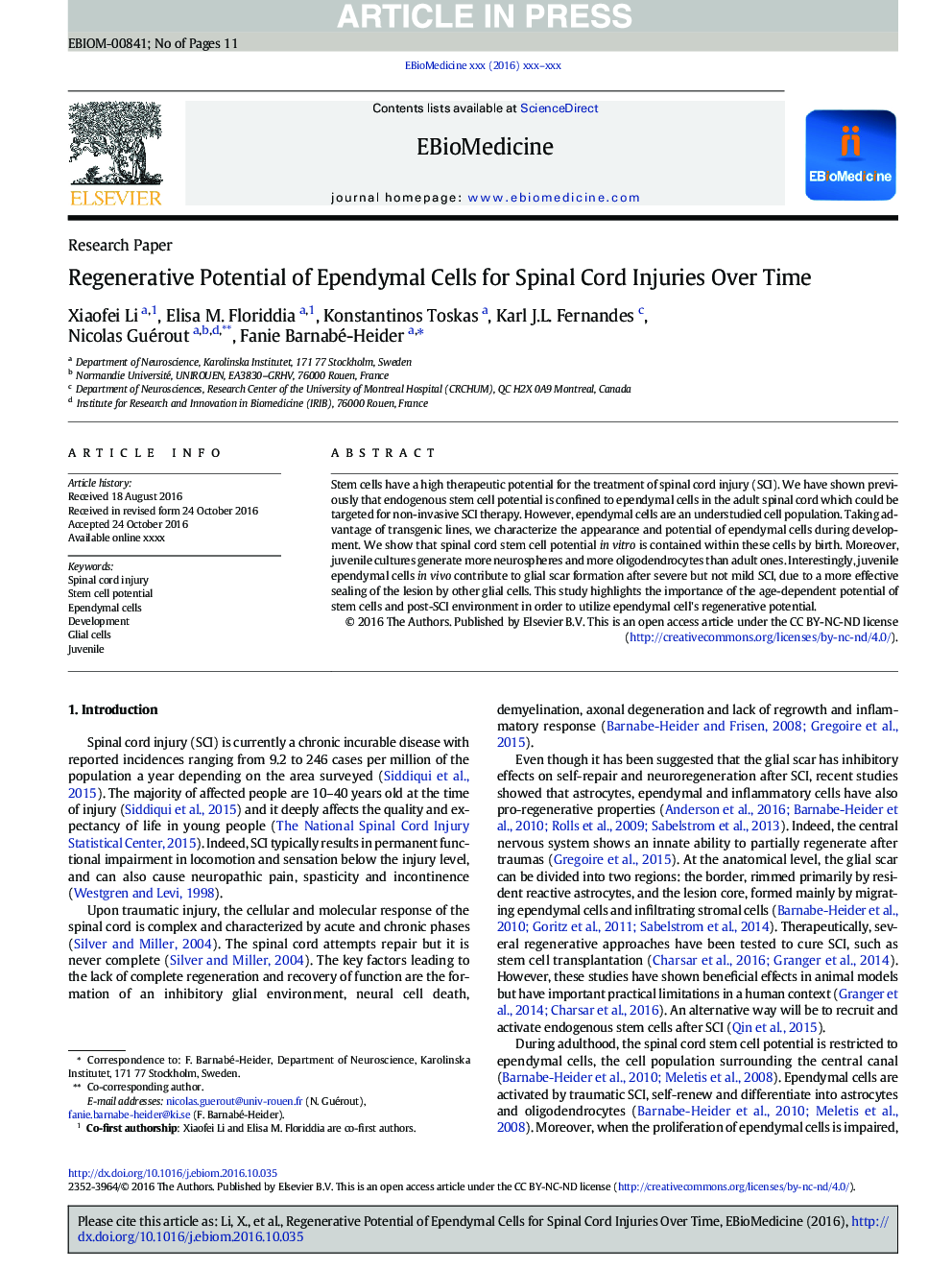| Article ID | Journal | Published Year | Pages | File Type |
|---|---|---|---|---|
| 8438924 | EBioMedicine | 2016 | 11 Pages |
Abstract
Schematic representation of different cell type responses to spinal cord injury (SCI) in juvenile and adult mice. In vitro juvenile ependymal cells have higher intrinsic self-renewal capacity with or without SCI compared to adults. After differentiation, juvenile ependymal cells can generate more oligodendrocytes than adult ones before or after SCI. In vivo juvenile spinal cord shows better recovery by sealing the lesion more efficiently: more dense astrocytic interaction, less astrogliosis, less infiltrating pericytes, microglia and blood-derived macrophages. After SCI, ependymal cells do not get activated in juvenile mild lesion due to the higher self-repair efficiency, while they are required for wound healing in mature adults or after a more severe lesion in juveniles. Thus, the activation of ependymal cells depends on age and lesion size despite their higher intrinsic stem cell potential at the juvenile stage. This study suggests that juvenile animals have higher self-repair efficiency and spinal cord environment and age should be taken into consideration to design further therapies. P21Â =Â postnatal day 21, DFTÂ =Â dorsal funiculi transection, DHÂ =Â dorsal hemisection.138
Related Topics
Life Sciences
Biochemistry, Genetics and Molecular Biology
Cancer Research
Authors
Xiaofei Li, Elisa M. Floriddia, Konstantinos Toskas, Karl J.L. Fernandes, Nicolas Guérout, Fanie Barnabé-Heider,
